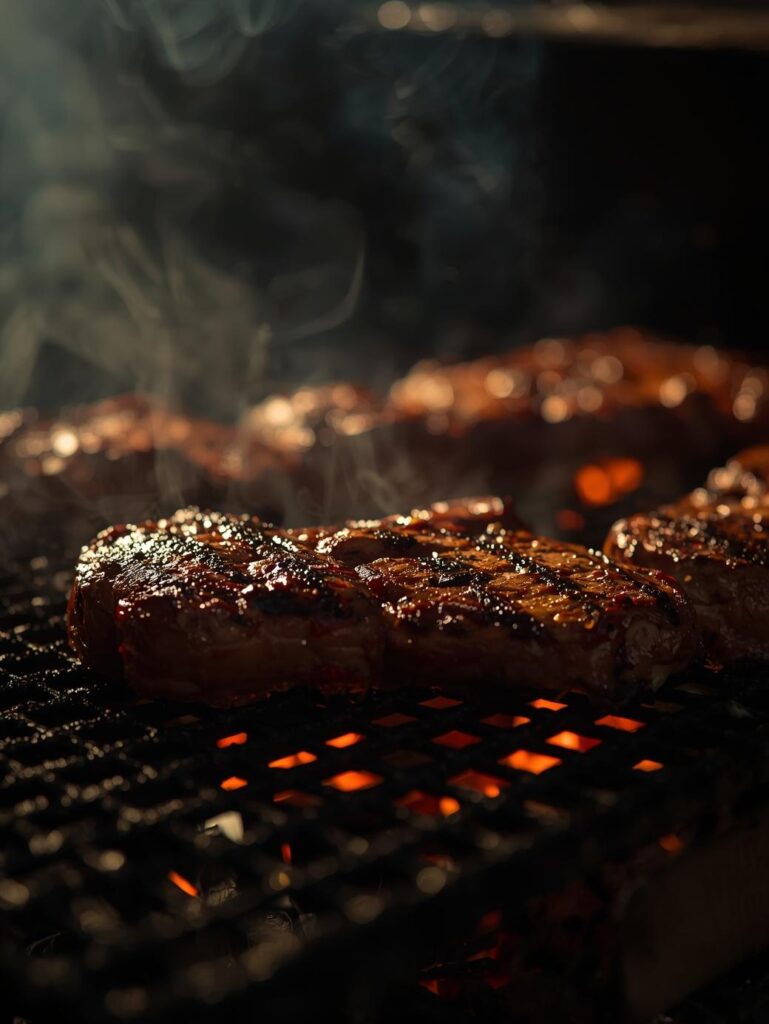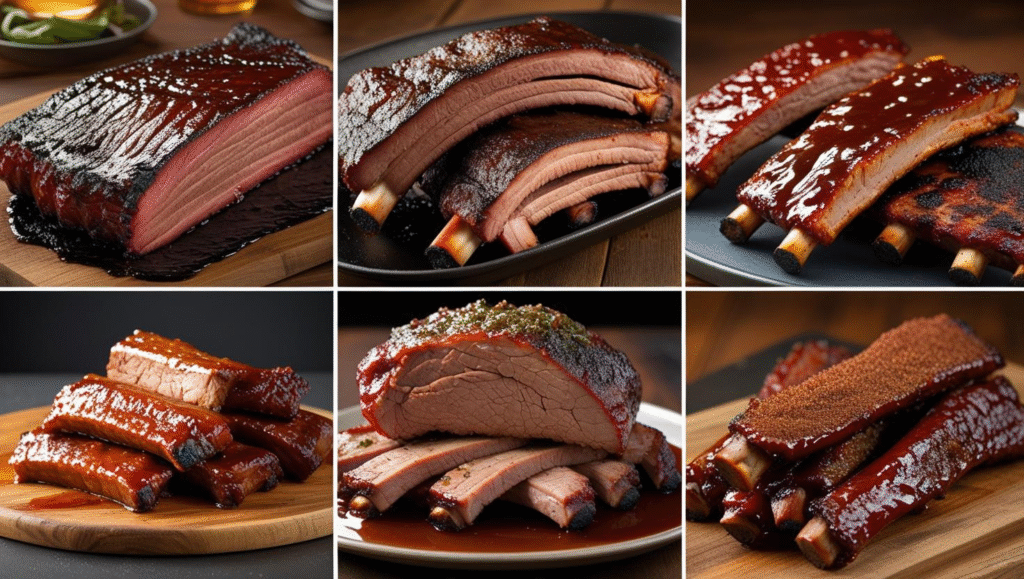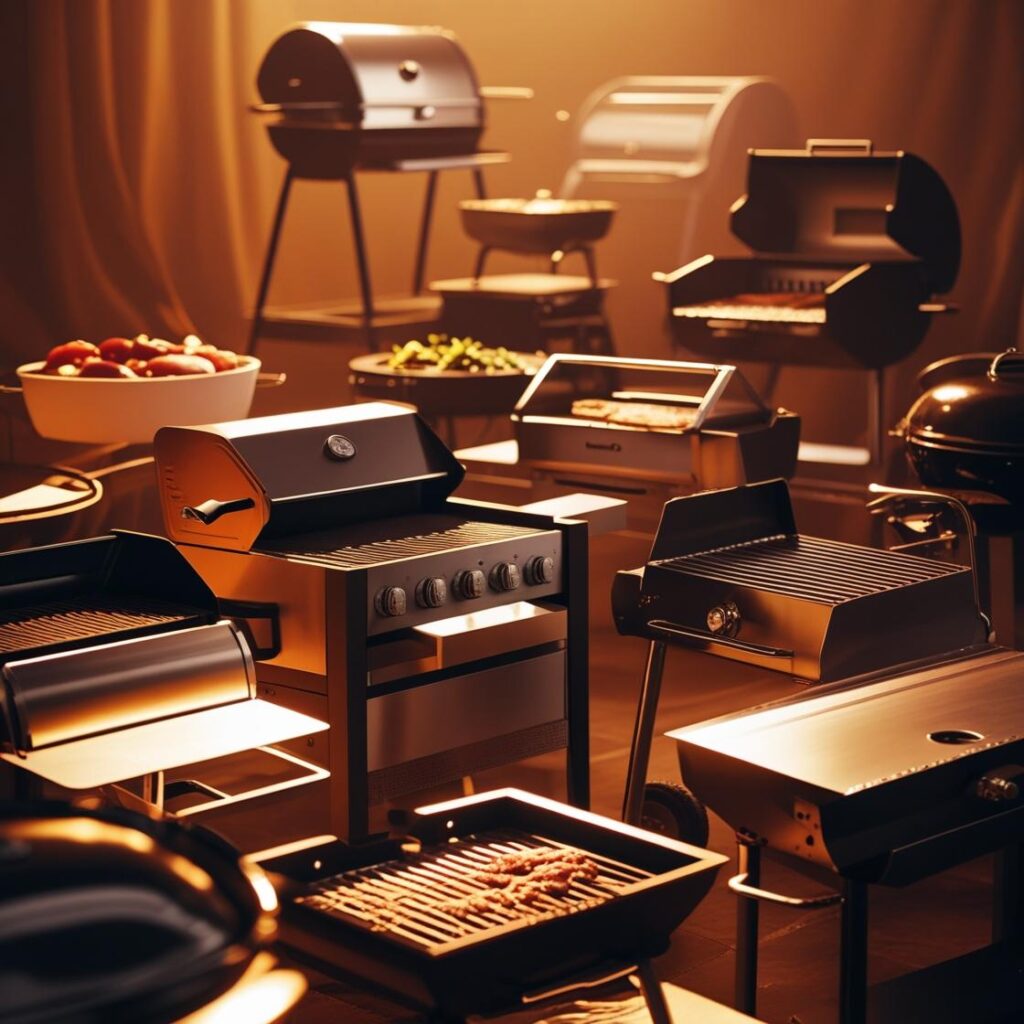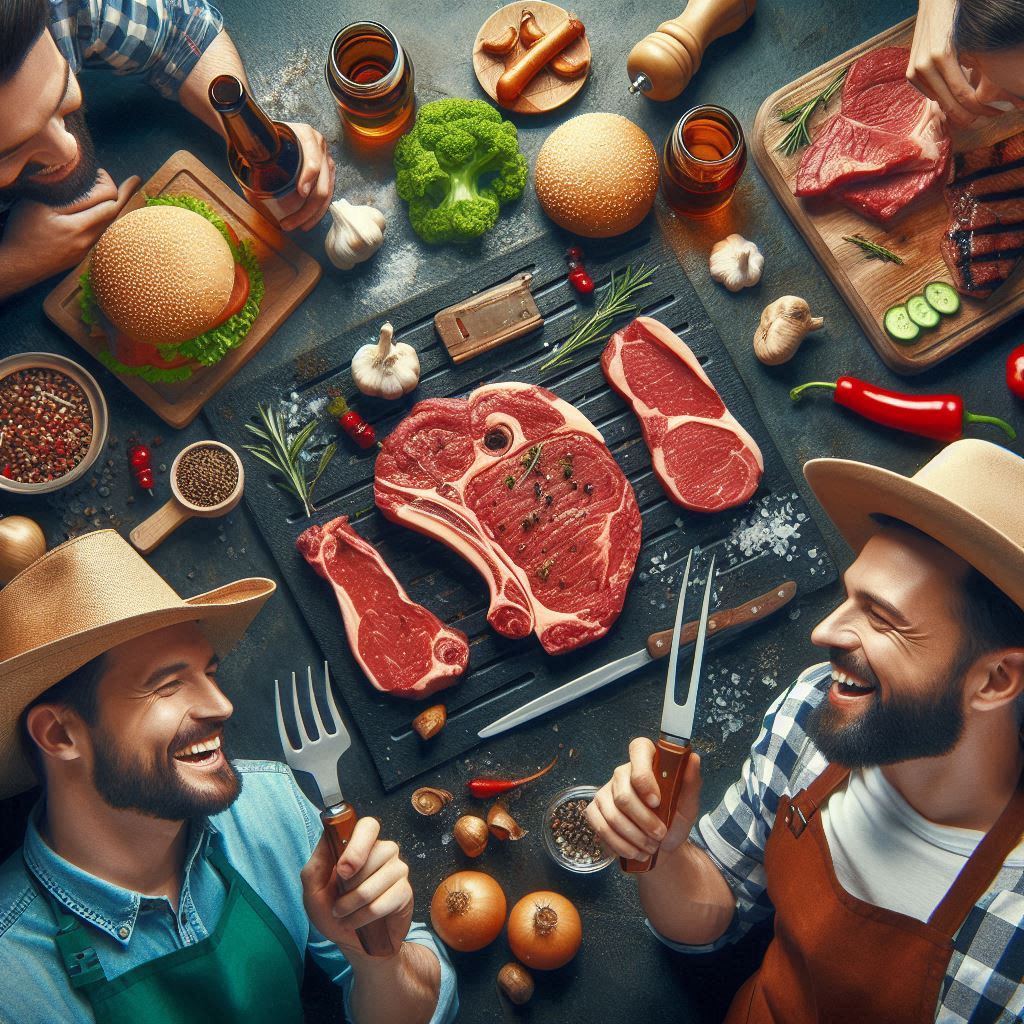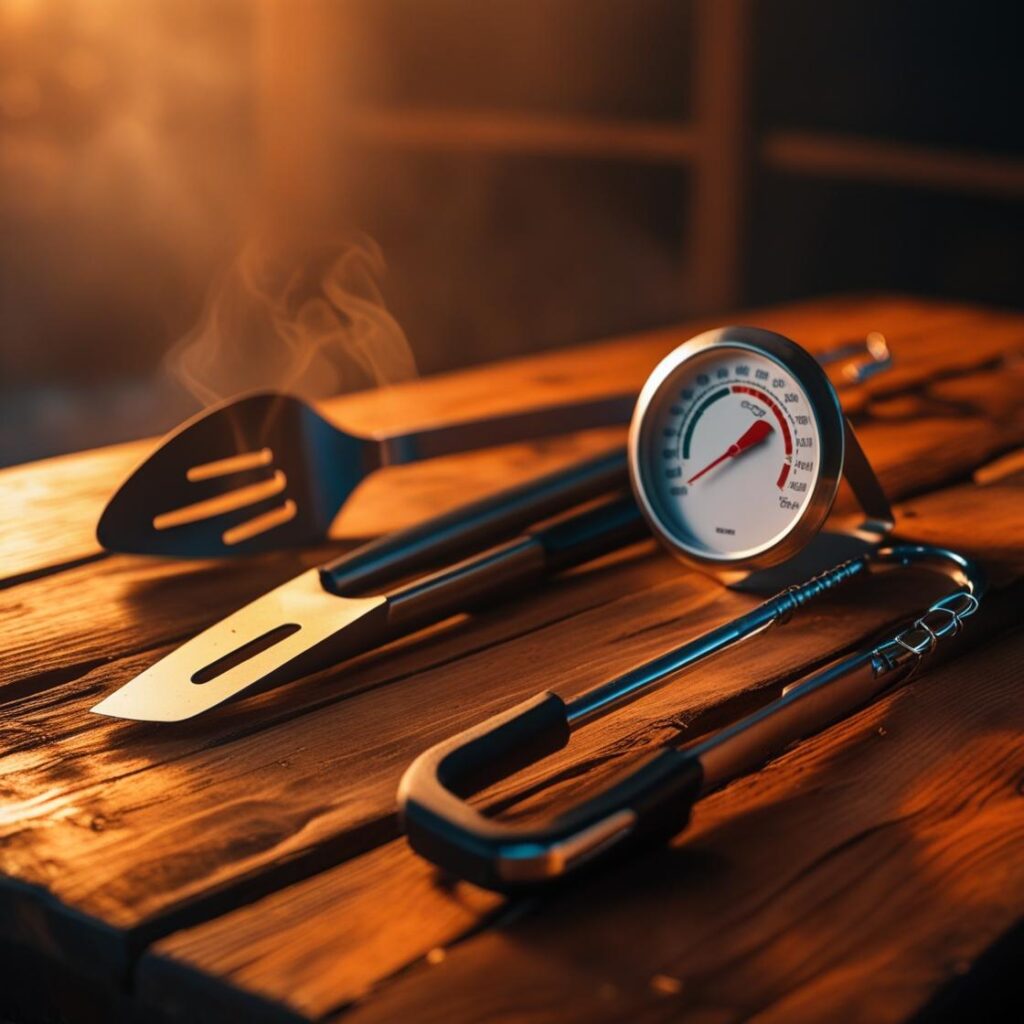7 Temperature Mistakes for BBQ That Destroy Juiciness
There’s an art to great BBQ. The goal is always the same: a tender, smoky piece of meat that practically melts in your mouth. But far too often, a promising slab of brisket or a rack of ribs ends up dry, tough, and disappointing. The number one culprit? A series of critical temperature mistakes. While many people focus on rubs, sauces, and wood types, the single most important factor for success is mastering BBQ temperature from start to finish.
This guide is designed to help you avoid the most common grilling errors that ruin juiciness. We’ll break down the 7 temperature mistakes that turn a perfect piece of meat into a culinary failure and provide you with the professional fixes you need to achieve truly juicy BBQ.
The Core Principle of BBQ: It’s All About Temperature
A true pitmaster knows that time is just a reference point. The real sign of doneness is the internal temperature of the meat. Whether you’re smoking a brisket for 12 hours or grilling a steak for 12 minutes, the internal temperature is the only metric that matters. Every one of these cooking mistakes stems from a failure to control or monitor this crucial metric.
7 Temperature Mistakes That Ruin Your BBQ (and How to Fix Them)
1. Not Using a Thermometer
This is the foundational error that every other mistake is built upon. Guessing doneness by sight or feel is a high-risk gamble.
- Why it happens: The color of the meat’s exterior and its firmness are not reliable indicators of its internal doneness. Meat can be perfectly charred on the outside but still raw on the inside, or it can be pale on the outside and completely overcooked within. Without a thermometer, you’re cooking blind.
- Professional Fix: Invest in a high-quality, fast-reading instant-read thermometer. It’s the most important tool you can own. It allows you to quickly and accurately check the internal temperature of your meat, ensuring it’s perfectly cooked. To know which temperatures to aim for, read our guide on 5 doneness temperatures you need to memorize.
2. Cooking at Too High a Temperature
This is the most common reason for a dry, tough final product, especially with low-and-slow cuts like brisket or pulled pork.
- Why it happens: When meat is exposed to excessively high heat, the muscle fibers contract rapidly. This intense contraction squeezes out moisture and fat, leaving the meat dry and stringy. The collagen, which needs a low and slow cook to break down into gelatin, simply seizes up and toughens.
- Professional Fix: For low-and-slow BBQ, maintain a consistent pit temperature between 225°F and 250°F. This allows the meat to cook gently over time, giving the connective tissues time to break down and melt. You can read more about setting up your grill for success in our guide on 7 grill temperature zones.
3. Not Accounting for the “Stall”
The “stall” is a critical phase in the low-and-slow cooking process that can cause inexperienced cooks to panic and crank up the heat.
- Why it happens: When a large piece of meat like a brisket or pork butt reaches an internal temperature of around 150°F to 165°F, it stops rising for several hours. This is due to evaporative cooling, where moisture on the surface of the meat evaporates and cools the meat, much like sweat cools your body.
- Professional Fix: Be patient and do not increase the heat. Simply let the meat push through the stall on its own. If you’re in a hurry, you can wrap the meat in butcher paper or foil (this is called the “Texas Crutch”) to push past the stall faster and retain moisture.
4. Not Using a Leave-In Probe
Continuously opening the smoker or grill lid to check the meat’s temperature is a surefire way to ruin your cook.
- Why it happens: Every time you open the lid, you lose a significant amount of heat and smoke. It can take 15-20 minutes for the pit to recover its stable BBQ temperature. This constant fluctuation in temperature can lead to an uneven cook and a tougher, drier result.
- Professional Fix: Use a multi-probe, leave-in thermometer. One probe monitors the ambient temperature of your pit, and the other probes are inserted into the thickest parts of your meat. This allows you to track temperatures from afar without ever opening the lid. This is the exact setup we detail in our guide on the 3-probe thermometer setup for multi-meat cooks.
5. Not Resting the Meat
This is a classic rookie mistake that can destroy hours of careful cooking in minutes.
- Why it happens: During the cooking process, the muscle fibers of the meat contract, squeezing the juices toward the center. If you slice into the meat immediately after removing it from the heat, all of those precious juices will spill out onto your cutting board. This is a primary cause of dry, tough BBQ.
- Professional Fix: After removing the meat from the grill, place it on a cutting board, tent it loosely with foil, and let it rest. A good rule of thumb is to rest for at least 10 minutes per pound. This allows the muscle fibers to relax and reabsorb the juices, leading to a moist, flavorful result. For more on this, check out our guide on 3 resting mistakes that drain all juices from your steak.
6. Trusting the Dome Thermometer
The built-in thermometer on your grill or smoker lid is often wildly inaccurate and misleading.
- Why it happens: The dome thermometer only measures the temperature at the top of the cooking chamber, not at the grate level where your meat is cooking. There can be a massive temperature difference of 50°F or more between the dome and the grates.
- Professional Fix: Always use a separate, reliable digital thermometer with a grate clip. Place the probe at the same level as your meat to get an accurate reading of the temperature where the cooking is actually happening.
7. Not Pulling the Meat Off the Heat Early
Even if you’re using a good thermometer, pulling the meat off at the exact target temperature is a mistake.
- Why it happens: “Carryover cooking” is the phenomenon where the residual heat in the meat continues to cook it after it has been removed from the heat source. This can cause the internal temperature to rise by as much as 5-10°F. If you pull the meat off at 165°F, it could end up at 175°F or higher, leading to a dry result.
- Professional Fix: Always pull your meat off the grill or smoker a few degrees below your target internal temperature. For example, if you’re aiming for 165°F for chicken, pull it at 160°F. This small adjustment is a pro-level tip we cover in our guide on the 10°F differences that change everything about your BBQ.
| Temperature Mistake | Why It Happens | Professional Fix |
| 1. No Thermometer | Cooking blind, leading to guesswork. | Use a high-quality instant-read thermometer. |
| 2. Too High Temp | Meat fibers contract, squeezing out juices. | Cook low and slow (225-250°F). |
| 3. Ignoring the Stall | You panic and raise the heat. | Be patient, or wrap the meat. |
| 4. Opening the Lid | Temperature fluctuates and heat is lost. | Use a multi-probe, leave-in thermometer. |
| 5. Not Resting Meat | Juices leak out when sliced. | Rest for at least 10 minutes per pound. |
| 6. Trusting Dome Thermometer | The reading is often inaccurate. | Use a separate grate-level thermometer. |
| 7. No Carryover Cooking | Meat overcooks while resting. | Pull the meat off the grill a few degrees early. |
FAQ: 7 Temperature Mistakes for BBQ That Destroy Juiciness
1. What’s the best temperature for low-and-slow BBQ?
The ideal temperature for low-and-slow BBQ is between 225°F and 250°F. This range allows the connective tissues to break down and the fat to render without drying out the meat.
2. How do I maintain a consistent temperature on my charcoal grill?
To maintain a consistent temperature, use the vents. Restrict the airflow by closing the vents slightly to lower the temperature, and open them to increase it. Avoid adding more charcoal, as that can cause sudden temperature spikes.
3. What’s the best thermometer for BBQ?
The best thermometer for BBQ is a multi-probe, leave-in digital thermometer. It allows you to monitor the internal temperature of your meat and the ambient temperature of your grill without opening the lid.
4. How long should I rest my meat?
A good rule of thumb is to rest for at least 10 minutes per pound for large cuts like brisket or pulled pork. For steaks, 5-10 minutes is sufficient.
5. How do I know if my grill’s dome thermometer is accurate?
You can test its accuracy by placing a separate, known-accurate thermometer next to it and comparing the readings. You’ll likely find a significant difference.
6. What is the Texas Crutch?
The “Texas Crutch” is a technique used to push through the “stall” and speed up the cooking process. It involves wrapping the meat in butcher paper or foil to trap heat and moisture.
7. What’s the biggest takeaway from this guide?
The biggest takeaway is that a thermometer is your best friend. Don’t guess; measure. Measuring the internal temperature of the meat and the ambient temperature of the grill will eliminate these common temperature mistakes and lead to perfect, juicy BBQ every time.
Conclusion
Mastering BBQ temperature is the single most important skill you can develop as a cook. By understanding and avoiding these 7 temperature mistakes, you will see a dramatic improvement in your results. The difference between a tough, dry piece of meat and a juicy, tender masterpiece lies in the details. So, grab a good thermometer, follow these tips, and get ready to cook some truly unforgettable BBQ.

